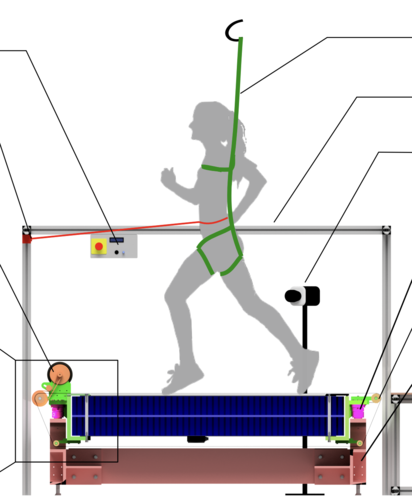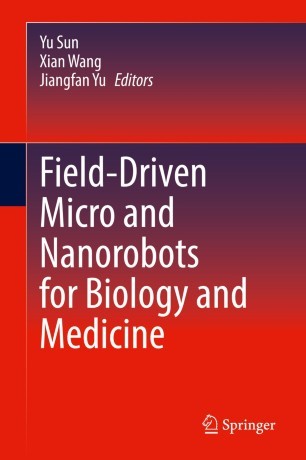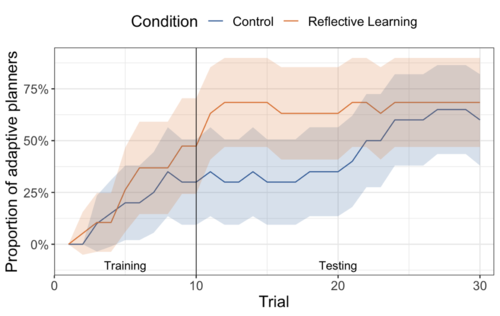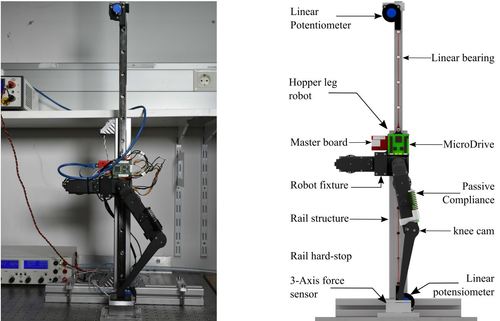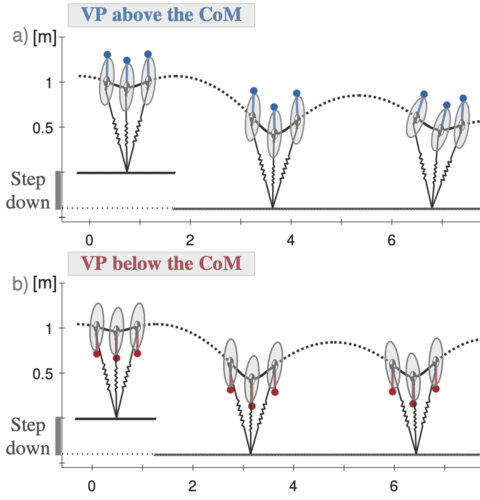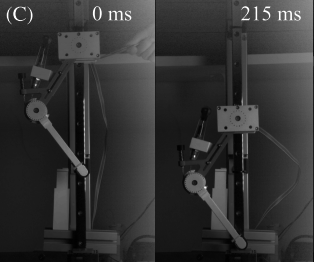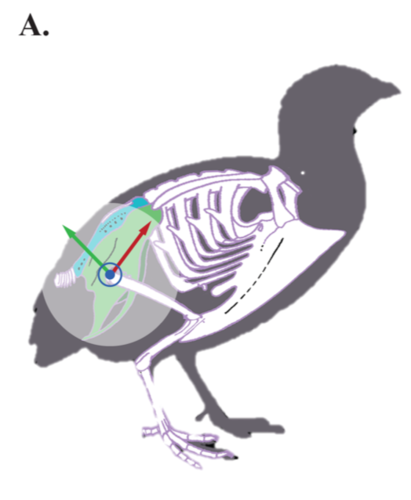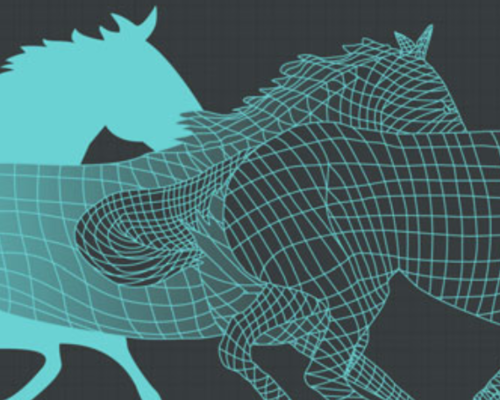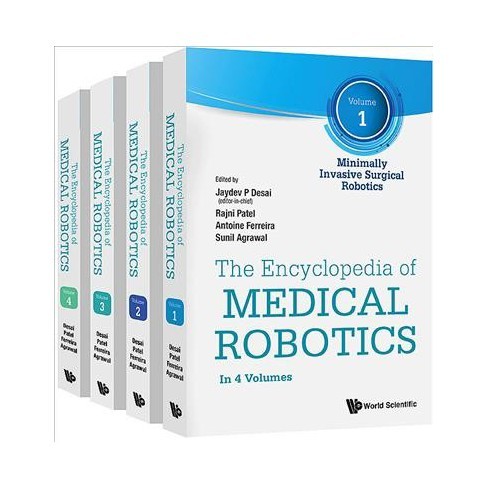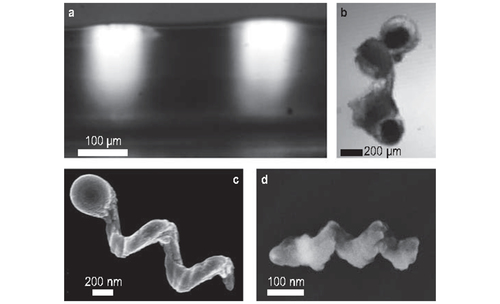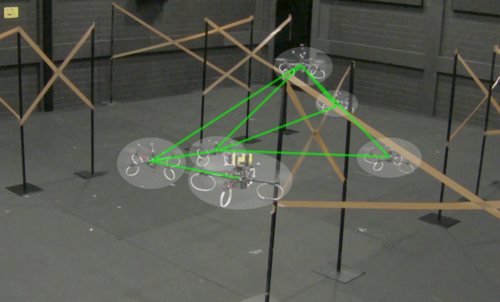2024
ei
Besserve, M., Safavi, S., Schölkopf, B., Logothetis, N.
LFP transient events in macaque subcortical areas reveal network coordination across scales and structures: a simultaneous fMRI-electrophysiology study
Computational and Systems Neuroscience Meeting (COSYNE), March 2024 (poster)
ei
Shao, K., Xu, Y., Logothetis, N., Shen, Z., Besserve, M.
Koopman Spectral Analysis Uncovers the Temporal Structure of Spontaneous Neural Events
Computational and Systems Neuroscience Meeting (COSYNE), March 2024 (poster)
2023
dlg
Sarvestani, A., Ruppert, F., Badri-Spröwitz, A.
An Open-Source Modular Treadmill for Dynamic Force Measurement with Load Dependant Range Adjustment
2023 (unpublished) Submitted
ei
Jin, Z., Mihalcea, R.
Natural Language Processing for Policymaking
In Handbook of Computational Social Science for Policy, pages: 141-162, 7, (Editors: Bertoni, E. and Fontana, M. and Gabrielli, L. and Signorelli, S. and Vespe, M.), Springer International Publishing, 2023 (inbook)
2022
pf
Qiu, T., Jeong, M., Goyal, R., Kadiri, V., Sachs, J., Fischer, P.
Magnetic Micro-/Nanopropellers for Biomedicine
In Field-Driven Micro and Nanorobots for Biology and Medicine, pages: 389-410, 16, (Editors: Sun, Y. and Wang, X. and Yu, J.), Springer, Cham, 2022 (inbook)
re
Lieder, F., Prentice, M.
Life Improvement Science
In Encyclopedia of Quality of Life and Well-Being Research, Springer, November 2022 (inbook)
ei
Peters, J., Bauer, S., Pfister, N.
Causal Models for Dynamical Systems
In Probabilistic and Causal Inference: The Works of Judea Pearl, pages: 671-690, 1, Association for Computing Machinery, 2022 (inbook)
ei
plg
Karimi, A. H., von Kügelgen, J., Schölkopf, B., Valera, I.
Towards Causal Algorithmic Recourse
In xxAI - Beyond Explainable AI: International Workshop, Held in Conjunction with ICML 2020, July 18, 2020, Vienna, Austria, Revised and Extended Papers, pages: 139-166, (Editors: Holzinger, Andreas and Goebel, Randy and Fong, Ruth and Moon, Taesup and Müller, Klaus-Robert and Samek, Wojciech), Springer International Publishing, 2022 (inbook)
ei
Salewski, L., Koepke, A. S., Lensch, H. P. A., Akata, Z.
CLEVR-X: A Visual Reasoning Dataset for Natural Language Explanations
In xxAI - Beyond Explainable AI: International Workshop, Held in Conjunction with ICML 2020, July 18, 2020, Vienna, Austria, Revised and Extended Papers, pages: 69-88, (Editors: Holzinger, Andreas and Goebel, Randy and Fong, Ruth and Moon, Taesup and Müller, Klaus-Robert and Samek, Wojciech), Springer International Publishing, 2022 (inbook)
ei
Schölkopf, B.
Causality for Machine Learning
In Probabilistic and Causal Inference: The Works of Judea Pearl, pages: 765-804, 1, Association for Computing Machinery, New York, NY, USA, 2022 (inbook)
2021
rm
Purnendu, , Novack, S., Acome, E., Alistar, M., Keplinger, C., Gross, M. D., Bruns, C., Leithinger, D.
Electriflow: Augmenting Books With Tangible Animation Using Soft Electrohydraulic Actuators
In ACM SIGGRAPH 2021 Labs, pages: 1-2, Association for Computing Machinery, SIGGRAPH 2021, August 2021 (inbook)
re
Frederic Becker, , Lieder, F.
Promoting metacognitive learning through systematic reflection
The first edition of Life Improvement Science Conference, June 2021 (poster)
2020
mms
Nacke, R.
Voltage dependent interfacial magnetism in multilayer systems
Universität Stuttgart, Stuttgart, December 2020 (thesis)
dlg
Milad Shafiee Ashtiani, A. A. S., Badri-Sproewitz, A.
Towards Hybrid Active and Passive Compliant Mechanisms in Legged Robots
IEEE/RSJ International Conference on Intelligent Robots and Systems (IROS), IEEE, October 2020 (poster) Accepted
dlg
Drama, Ö., Badri-Spröwitz, A.
VP above or below? A new perspective on the story of the virtual point
Dynamic Walking, May 2020 (poster)
dlg
Mo, A., Izzi, F., Haeufle, D. F. B., Badri-Spröwitz, A.
Viscous Damping in Legged Locomotion
Dynamic Walking, May 2020 (poster)
dlg
Ruppert, F., Badri-Spröwitz, A.
How Quadrupeds Benefit from Lower Leg Passive Elasticity
Dynamic Walking, May 2020 (poster)
dlg
Kamska, V., Daley, M., Badri-Spröwitz, A.
Potential for elastic soft tissue deformation and mechanosensory function within the lumbosacral spinal canal of birds
Society for Integrative and Comparative Biology Annual Meeting (SICB Annual Meeting 2020), January 2020 (poster)
ev
Usenko, V., Stumberg, L. V., Stückler, J., Cremers, D.
TUM Flyers: Vision-Based MAV Navigation for Systematic Inspection of Structures
In Bringing Innovative Robotic Technologies from Research Labs to Industrial End-users: The Experience of the European Robotics Challenges, 136, pages: 189-209, Springer Tracts in Advanced Robotics, Springer International Publishing, 2020 (inbook)
icm
Popescu, M. N., Uspal, W. E.
Adopting the Boundary Homogenization Approximation from Chemical Kinetics to Motile Chemically Active Particles
In Chemical Kinetics, pages: 517-540, (Editors: Lindenberg, Katja and Metzler, Ralf and Oshanin, Gleb), World Scientific, New Jersey, NJ, 2020 (incollection)
pf
Palagi, S.
Soft Microrobots Based on Photoresponsive Materials
In Mechanically Responsive Materials for Soft Robotics, pages: 327-362, (Editors: Koshima, Hideko), Wiley-VCH, Weinheim, 2020 (incollection)
2019
ei
Meding, K., Schölkopf, B., Wichmann, F. A.
Perception of temporal dependencies in autoregressive motion
Perception, 48(2-suppl):141, 42nd European Conference on Visual Perception (ECVP), August 2019 (poster)
ei
Bruijns, S. A., Meding, K., Schölkopf, B., Wichmann, F. A.
Phenomenal Causality and Sensory Realism
Perception, 48(2-suppl):141, 42nd European Conference on Visual Perception (ECVP), August 2019 (poster)
ei
Shao, K., Logothetis, N., Besserve, M.
Neural mass modeling of the Ponto-Geniculo-Occipital wave and its neuromodulation
28th Annual Computational Neuroscience Meeting (CNS*2019), July 2019 (poster)
ics
Mager, F., Baumann, D., Jacob, R., Thiele, L., Trimpe, S., Zimmerling, M.
Demo Abstract: Fast Feedback Control and Coordination with Mode Changes for Wireless Cyber-Physical Systems
Proceedings of the 18th ACM/IEEE Conference on Information Processing in Sensor Networks (IPSN), pages: 340-341, 18th ACM/IEEE Conference on Information Processing in Sensor Networks (IPSN), April 2019 (poster)
mms
Schütz, G.
Nanomagnetismus im Röntgenlicht
In Vielfältige Physik, pages: 173-182, Springer Spektrum, Berlin, Heidelberg, 2019 (incollection)
dlg
Badri-Spröwitz, A.
Das Tier als Modell für Roboter, und Roboter als Modell für Tiere
In pages: 167-175, Springer, 2019 (incollection)
2018
pf
Palagi, S., Walker, D. Q. T., Fischer, P.
Nanoscale robotic agents in biological fluids and tissues
In The Encyclopedia of Medical Robotics, 2, pages: 19-42, 2, (Editors: Desai, J. P. and Ferreira, A.), World Scientific, October 2018 (inbook)
hi
Kuchenbecker, K. J.
Haptics and Haptic Interfaces
In Encyclopedia of Robotics, (Editors: Marcelo H. Ang and Oussama Khatib and Bruno Siciliano), Springer, May 2018 (incollection)
ics
Mager, F., Baumann, D., Trimpe, S., Zimmerling, M.
Poster Abstract: Toward Fast Closed-loop Control over Multi-hop Low-power Wireless Networks
Proceedings of the 17th ACM/IEEE Conference on Information Processing in Sensor Networks (IPSN), pages: 158-159, Porto, Portugal, April 2018 (poster)
ei
Goris, R., Henaff, O., Meding, K.
Representation of sensory uncertainty in macaque visual cortex
Computational and Systems Neuroscience (COSYNE) 2018, March 2018 (poster)
ei
Safavi, S., Panagiotaropoulos, T., Kapoor, V., Logothetis, N. K., Besserve, M.
Generalized phase locking analysis of electrophysiology data
7th AREADNE Conference on Research in Encoding and Decoding of Neural Ensembles, 2018 (poster)
ei
Schölkopf, B.
Maschinelles Lernen: Entwicklung ohne Grenzen?
In Mit Optimismus in die Zukunft schauen. Künstliche Intelligenz - Chancen und Rahmenbedingungen, pages: 26-34, (Editors: Bender, G. and Herbrich, R. and Siebenhaar, K.), B&S Siebenhaar Verlag, 2018 (incollection)
ei
Wichmann, F. A., Jäkel, F.
Methods in Psychophysics
In Stevens’ Handbook of Experimental Psychology and Cognitive Neuroscience, 5 (Methodology), 7, 4th, John Wiley & Sons, Inc., 2018 (inbook)
ei
Pérez-Pellitero, E., Sajjadi, M. S. M., Hirsch, M., Schölkopf, B.
Photorealistic Video Super Resolution
Workshop and Challenge on Perceptual Image Restoration and Manipulation (PIRM) at the 15th European Conference on Computer Vision (ECCV), 2018 (poster)
ei
Meding, K., Hirsch, M., Wichmann, F. A.
Retinal image quality of the human eye across the visual field
14th Biannual Conference of the German Society for Cognitive Science (KOGWIS 2018), 2018 (poster)
ei
Jayaram, V., Fiebig, K., Peters, J., Grosse-Wentrup, M.
Transfer Learning for BCIs
In Brain–Computer Interfaces Handbook, pages: 425-442, 22, (Editors: Chang S. Nam, Anton Nijholt and Fabien Lotte), CRC Press, 2018 (incollection)
2017
ei
Aghaeifar, A., Loktyushin, A., Eschelbach, M., Scheffler, K.
Improving performance of linear field generation with multi-coil setup by optimizing coils position
Magnetic Resonance Materials in Physics, Biology and Medicine, 30(Supplement 1):S259, 34th Annual Scientific Meeting of the European Society for Magnetic Resonance in Medicine and Biology (ESMRMB), October 2017 (poster)
ei
Loktyushin, A., Ehses, P., Schölkopf, B., Scheffler, K.
Estimating B0 inhomogeneities with projection FID navigator readouts
25th Annual Meeting and Exhibition of the International Society for Magnetic Resonance in Medicine (ISMRM), April 2017 (poster)
ei
Feng, X., Loktyushin, A., Deistung, A., Reichenbach, J.
Image Quality Improvement by Applying Retrospective Motion Correction on Quantitative Susceptibility Mapping and R2*
25th Annual Meeting and Exhibition of the International Society for Magnetic Resonance in Medicine (ISMRM), April 2017 (poster)
pf
Palagi, S., (Walker) Schamel, D., Qiu, T., Fischer, P.
Chapter 8 - Micro- and nanorobots in Newtonian and biological viscoelastic fluids
In Microbiorobotics, pages: 133 - 162, 8, Micro and Nano Technologies, Second edition, Elsevier, Boston, March 2017 (incollection)
am
ei
Peters, J., Lee, D., Kober, J., Nguyen-Tuong, D., Bagnell, J., Schaal, S.
Robot Learning
In Springer Handbook of Robotics, pages: 357-394, 15, 2nd, (Editors: Siciliano, Bruno and Khatib, Oussama), Springer International Publishing, 2017 (inbook)
ei
Peters, J., Bagnell, J.
Policy Gradient Methods
In Encyclopedia of Machine Learning and Data Mining, pages: 982-985, 2nd, (Editors: Sammut, Claude and Webb, Geoffrey I.), Springer US, 2017 (inbook)
ei
Flad, N., Fomina, T., Bülthoff, H. H., Chuang, L. L.
Unsupervised clustering of EOG as a viable substitute for optical eye-tracking
In First Workshop on Eye Tracking and Visualization (ETVIS 2015), pages: 151-167, Mathematics and Visualization, (Editors: Burch, M., Chuang, L., Fisher, B., Schmidt, A., and Weiskopf, D.), Springer, 2017 (inbook)
ei
Peters, J., Tedrake, R., Roy, N., Morimoto, J.
Robot Learning
In Encyclopedia of Machine Learning and Data Mining, pages: 1106-1109, 2nd, (Editors: Sammut, Claude and Webb, Geoffrey I.), Springer US, 2017 (inbook)
ei
Janzing, D.
Statistical Asymmetries Between Cause and Effect
In Time in Physics, pages: 129-139, Tutorials, Schools, and Workshops in the Mathematical Sciences, (Editors: Renner, Renato and Stupar, Sandra), Springer International Publishing, Cham, 2017 (inbook)
ps
Nestmeyer, T., Robuffo Giordano, P., Bülthoff, H. H., Franchi, A.
Decentralized Simultaneous Multi-target Exploration using a Connected Network of Multiple Robots
In pages: 989-1011, Autonomous Robots, 2017 (incollection)
ei
Safavi, S., Panagiotaropoulos, T., Kapoor, V., Logothetis, N. K., Besserve, M.
Generalized phase locking analysis of electrophysiology data
ESI Systems Neuroscience Conference (ESI-SyNC 2017): Principles of Structural and Functional Connectivity, 2017 (poster)
mg
Righetti, L., Herzog, A.
Momentum-Centered Control of Contact Interactions
In Geometric and Numerical Foundations of Movements, 117, pages: 339-359, Springer Tracts in Advanced Robotics, Springer, Cham, 2017 (incollection)
2016
am
Dominey, P. F., Prescott, T. J., Bohg, J., Engel, A. K., Gallagher, S., Heed, T., Hoffmann, M., Knoblich, G., Prinz, W., Schwartz, A.
Implications of Action-Oriented Paradigm Shifts in Cognitive Science
In The Pragmatic Turn - Toward Action-Oriented Views in Cognitive Science, 18, pages: 333-356, 20, Strüngmann Forum Reports, vol. 18, J. Lupp, series editor, (Editors: Andreas K. Engel and Karl J. Friston and Danica Kragic), The MIT Press, 18th Ernst Strüngmann Forum, May 2016 (incollection) In press


